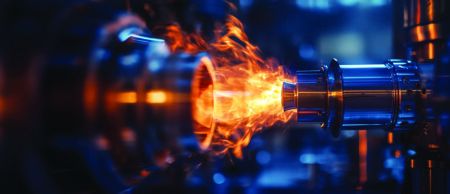There have been several attempts to create a blended wing aircraft during the past hundred years. The first, the Westland Dreadnought in 1924 ended in a tragic crash. The latest, JetZero in the USA, aims to fly a blended wing aircraft the size of a Boeing 757 in 2027. But the aircraft that has advanced the novel concept the most is NASA’s X-48.
The beginnings of the X-48 experimental aircraft can be traced back to work done at McDonnell Douglas during the 1990s. Following the merger with Boeing in 1997, a propeller-driven blended wing body (BWB) model with a 5.2m (17ft) wingspan was built and flown.
This led to engineers at Boeing and NASA designing a high capacity, long range BWB transport aircraft powered by three turbojet engines. The aircraft was designated X-48A in 2001. The plan was to build a 14% scale model of the BWB transport aircraft with a 10.7m (35ft) wingspan and fly it in 2004.
Unfortunately, NASA canceled the construction of this scaled model in 2002. But development of X-48 continued. Boeing contracted UK company Cranfield Aerospace to design and build a smaller 8.5% model with a 6.4m (21ft) wingspan.
Cranfield Aerospace produced two remotely controlled X-48Bs. The first, X-48A completed 250 hours of wind tunnel tests at NASA’s Langley Research Center in May 2006. It then made its maiden flight of 31 minutes on July 20, 2007 at NASA’s Dryden facility, reaching an altitude of 7,500ft. The initial phase of flight testing was completed in March 2010.
The second X-48 was modified to become the X-48C and was used in a second phase of flight testing. NASA engineers made several changes to the design to reduce the amount of noise X-48 produced and improve low speed stability and control. The X-48C was powered by two Advanced Micro Turbo turbojet engines instead of three engines, the winglets were moved to either side of the engines, and the fuselage extended 2ft at the rear. X-48C flight testing started in August 2012 and concluded in April 2013.

In total, the X-48 flew 122 times at NASA Dryden between 2007 and 2013, 92 times as the B-model and 30 as the C-model. Following the completion of X-48C flight testing in 2013, Boeing and NASA announced plans to develop a larger BWB demonstrator capable of transonic flight. These plans failed to materialize, despite the positive results and the large estimated achievable fuel savings a BWB would provide.
Instead, a X-48 successor is now being developed by JetZero. The company’s founders include Mark Page, and senior managers include Bob Liebeck and Blaine Rawdon. They are credited with inventing the X-48 at McDonnell Douglas and were key members of the NASA program.
X-48B/C Vital Statistics
- Wingspan: 20ft 5in
- Weight: 500lbs
- Speed: 137mph
- Ceiling:10,000ft
- Engines: 156 / 178lbs of thrust from 3x JetCat P200 turbojet (B) / 2x SPT15 JetCat Ducted Fan (C)





